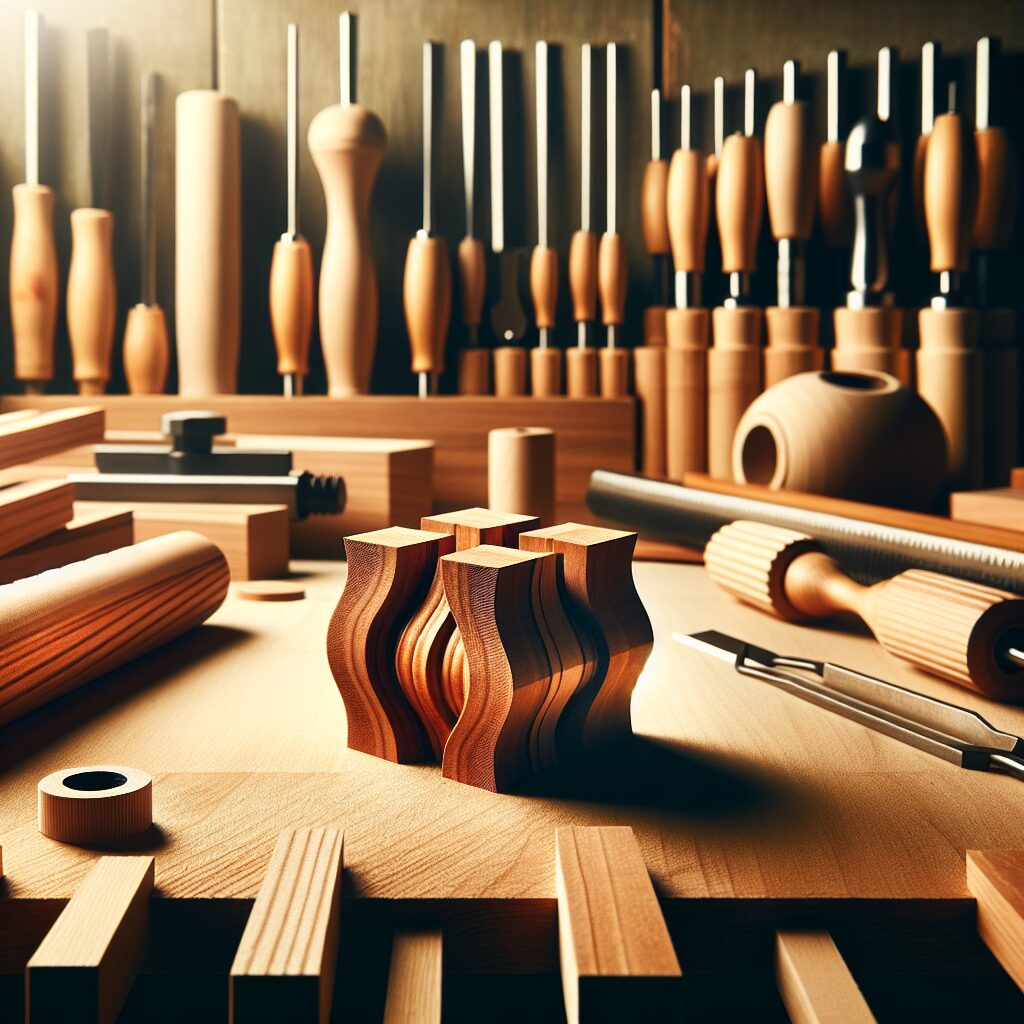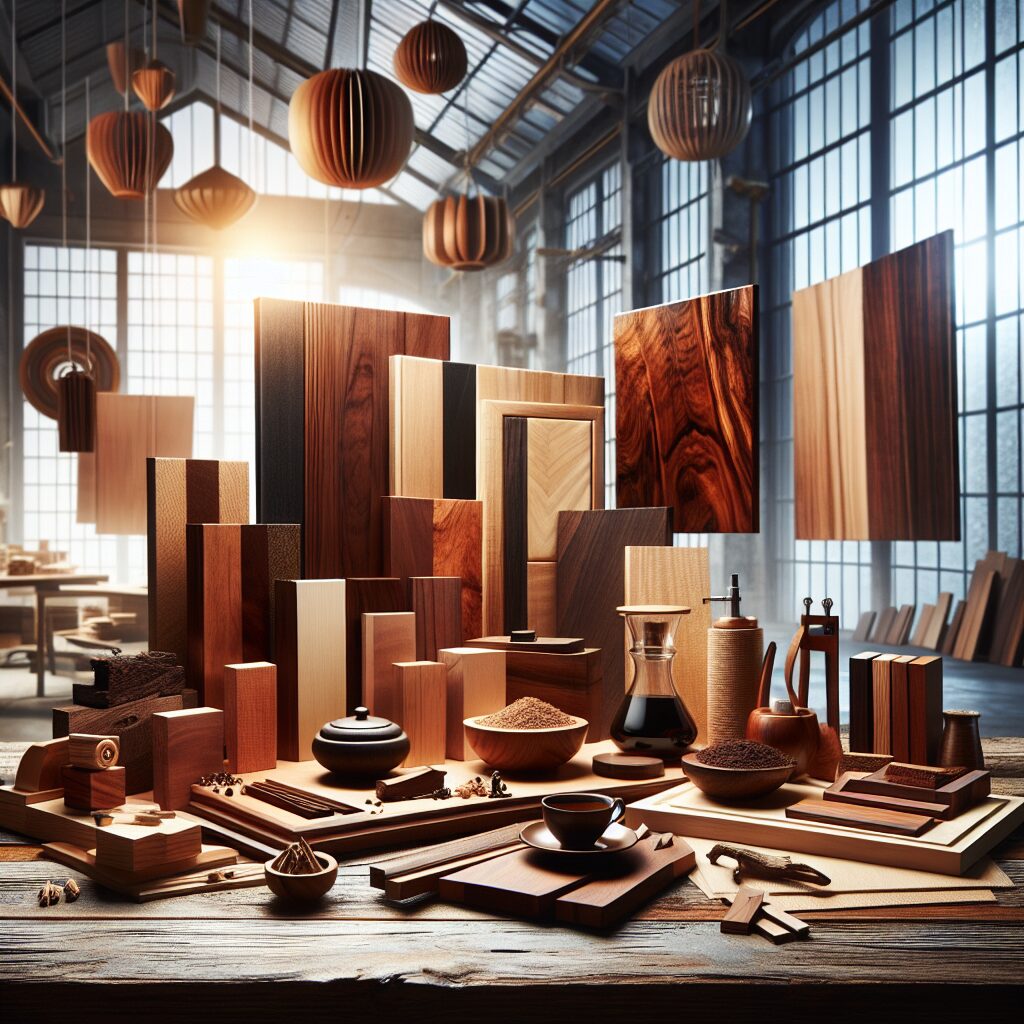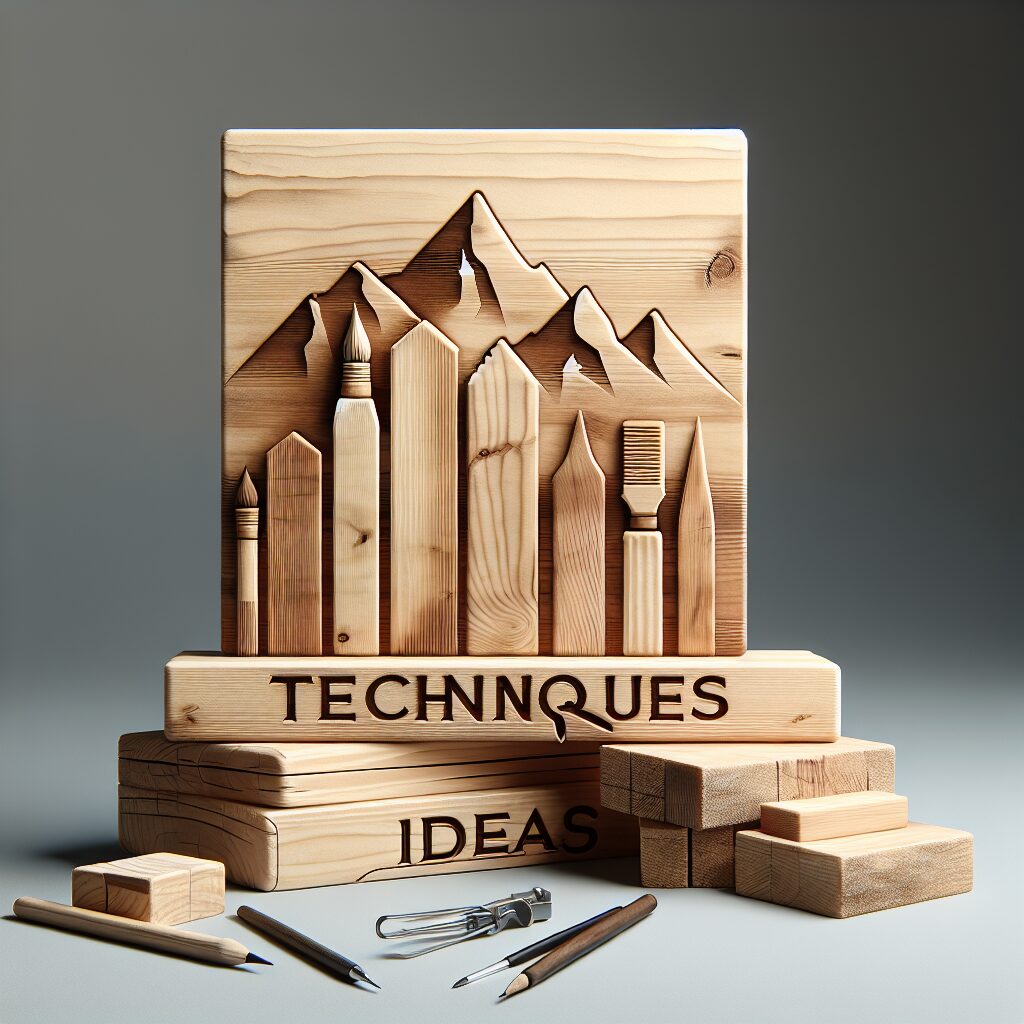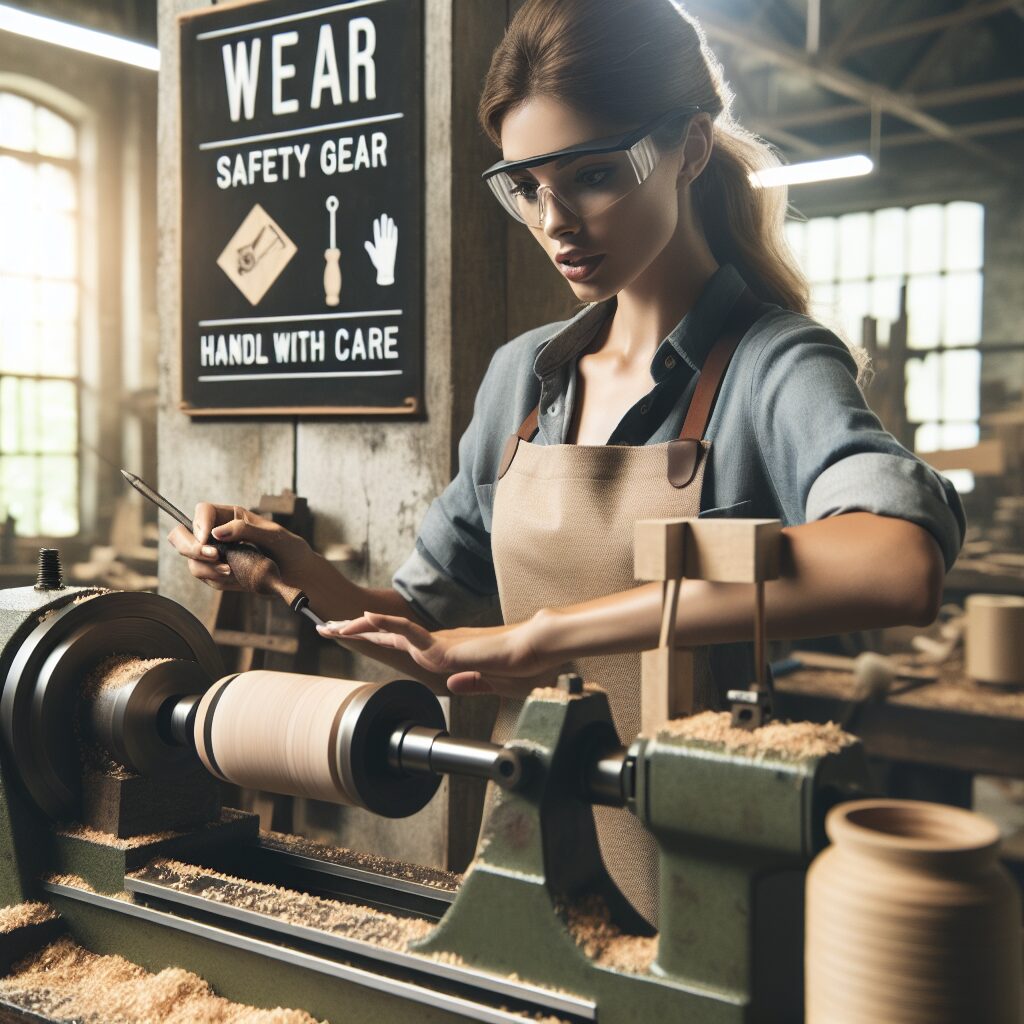In this comprehensive woodworking article, every wood enthusiast and dedicated woodworker will discover the secrets behind selecting the perfect wood types for any woodworking project. This guide, filled with insights about wood, furniture, and lumber, introduces an exciting world of diverse woods—from the timeless oak and maple to innovative engineered wood options. Whether you’re planning a woodworking project for wood for your home or creating exquisite wood furniture, you’ll learn the differences between hardwood and softwood, as well as how wood grain and veneers enhance each piece. The article delves into topics such as wood species classification, structural board selections, and the beauty of wood products in cabinetry and flooring. Our step‐by‐step approach covers every detail, ensuring that wood, furniture, and lumber choices complement both indoor and outdoor settings while celebrating the natural grain of trees like oak, pine, and more.
Understanding Wood Types: Essential Wood, Furniture, Lumber, and Woods for Your Woodworking Journey
In this section, we introduce the essential wood types every woodworker should know. The discussion focuses on wood varieties that not only enhance furniture design but also provide reliable lumber for projects. We examine common wood types such as hardwood and softwood, and reveal how the natural grain of wood contributes to its overall strength. Whether using wood for your cabinetry or selecting the right wood for your woodworking project, understanding wood species is key. The article also covers how diverse woods—ranging from oak and pine to cedar and mahogany—play a critical role in quality furniture making. With practical examples and clear comparisons, this section sets the stage for exploring wood types in depth.
Exploring Common Hardwood and Softwood Varieties: Oak, Pine, and Maple in Woodworking
This section examines common hardwood and softwood varieties with a focus on oak, pine, and maple. The text discusses how wood, with its intricate grain and natural textures, provides the ideal material for furniture projects and general woodworking applications. We explain why hardwoods like oak and maple are favored for their durability, and how softwood options, including pine, remain popular in construction lumber and decorative wood furniture. In addition to classic wood types, the discussion touches on the value of wood for your woodworking project when selecting the right wood species. Detailed insights into wood grain, color, and finish are provided to help readers make an informed decision.
Hardwood & Softwood Insights: Evaluating Oak, Pine, Maple, and Cedar Woods for Furniture, Lumber, and Flooring
Delving deeper into hardwood and softwood insights, this subsection compares oak, pine, maple, and cedar. The natural wood grain of oak and the smooth texture of pine make these woods ideal for flooring and furniture making. We also explore how cedar, with its distinct aroma and durability, and maple—with its even wood grain—contribute to a wide variety of wood projects. In evaluating wood types, our guide explains how hardwood and softwood selections affect the overall quality of furniture and wood products. This detailed evaluation ensures that every woodworker can choose one perfect wood type for every application, whether for structural boards or decorative veneers.
Engineered Wood and Plywood: Innovations in Woodworking and Wood for Your Projects
Engineered wood and plywood have transformed modern woodworking. In this section, we explain how engineered wood is created by bonding layers of wood together and how plywood is manufactured from thin wood boards. These wood products offer exceptional durability and dimensional stability compared to traditional lumber. Woodworkers appreciate engineered wood for its uniform wood grain and resistance to warping. In addition, these wood types are increasingly used in furniture making, cabinetry, and flooring applications. With the help of tables and comparative lists, we outline the benefits of engineered wood and plywood, detailing how wood for your next project can combine innovation with the natural beauty of wood.
Innovative Engineered Wood: Plywood, Engineered Designs, and Wood Products Material Overview
This subsection spotlights innovative engineered wood options, including plywood and advanced engineered wood. Here, wood products are described in terms of their superior construction and consistent wood grain patterns. Plywood, often used in cabinetry and furniture, combines multiple layers of wood to produce a durable board. In addition, engineered designs are revolutionizing the way wood is utilized, ensuring that every woodworker finds a solution that fits both modern materials and classic wood aesthetics. The discussion covers essential items such as wood veneers and resins that help maintain structural integrity, making engineered wood a reliable material for furniture and flooring.
Engineered Innovations: Density Fiberboard and Engineered Wood Applications
In this part, we examine density fiberboard and other engineered wood applications that enhance woodworking projects. Density fiberboard is created by compressing wood fibers with resins, resulting in a board with a uniform wood grain and consistent hardness. Woodworkers appreciate this soft yet robust material for its ease of shaping and finishing. This section explains how density fiberboard, alongside traditional engineered wood, finds use in furniture making, cabinetry, and even decorative wood panels. By comparing the benefits and limitations, the guide helps you decide which wood type—whether engineered wood or classic plywood—is best suited for your woodworking project. The discussion reinforces that innovative wood products are essential in modern wood crafts.
Exploring Exotic Woods: Mahogany, Walnut, and Redwood in Woodworking
Exotic woods like mahogany, walnut, and redwood bring a unique character to every wood project. Their distinctive wood grain and rich colors make these woods prized in high-end furniture making. In this section, we explore the natural beauty of mahogany and walnut, along with the durability of redwood. Each wood type offers a different hardness and texture, ensuring that wood for your cabinetry or decorative flooring stands out. The discussion highlights not only the aesthetic appeal but also the practical applications of these exotic wood species in both wood products and construction lumber. This exploration celebrates the variety found among wood species and the allure of exotic woods.
Exotic Wood Characteristics: Mahogany, Walnut, and Redwood Analysis in Woodworking Furniture
Focusing on exotic wood characteristics, this subsection analyzes mahogany, walnut, and redwood for their exceptional qualities in woodworking furniture. Mahogany is admired for its rich color and smooth wood grain, while walnut offers a dramatic contrast with a unique pattern. Redwood, sourced from majestic trees, brings warmth and durability to wood products. The analysis delves into each wood type’s hardness, grain, and finish. By comparing these exotic woods, the section helps you select the right material for high-end furniture making. Detailed charts and lists further illustrate how each wood’s unique properties translate into superior wood for your next woodworking project.
Traditional Wood Species: Birch, Beech, and Cedar for Furniture Making
Traditional wood species such as birch, beech, and cedar have long been favorites for furniture making and construction lumber. Their natural wood grain and reliable performance make them ideal for wood projects. In this section, we explore how birch offers a smooth surface, beech provides exceptional durability, and cedar is renowned for its resistance to decay. Woodworkers and furniture makers alike value these wood types for their versatility and beauty. Whether you are selecting wood for your kitchen cabinets or designing wood furniture with classic wood grain patterns, these traditional woods are an excellent choice. Their history and proven performance continue to influence modern wood crafts.
Traditional Wood Detailing: Birch, Beech, and Cedar for Timeless Wood Furniture and Lumber
This subsection details the characteristics of traditional wood—birch, beech, and cedar—in the realm of timeless wood furniture and lumber. The natural wood grain in birch provides a light brown, even appearance, while beech wood is prized for its hardness and uniformity. Cedar, with its aromatic qualities, stands out as one of the most popular woods for outdoor furniture and decorative wood products. The discussion includes comparisons of wood grain patterns and finishes, offering a clear guide for woodworkers seeking the ideal wood for your cabinetry or other furniture making projects. Detailed lists and tables emphasize each wood type’s merits for structural and decorative uses.
Structural Wood and Board Options: Hard and Soft Boards in Woodworking Projects
When planning a woodworking project, the selection of structural wood and boards is crucial. This section explains the differences between hard board and soft boards, and how these wood types contribute to overall stability and design in furniture and construction lumber. Wood with a pronounced wood grain and consistent board quality is essential for applications ranging from cabinet construction to flooring. Woodworkers often use both engineered wood and traditional boards in order to achieve the right balance between strength and aesthetic appeal. In this discussion, every wood for your project is considered—from structural board selections to softer wood choices suitable for intricate veneers and wood crafts.
Board Options Explored: Hard Board, Soft Boards, and Structural Wood Insights
Here we explore various board options available to woodworkers. Hard board is celebrated for its durability and consistent wood grain, making it an ideal choice for wood furniture and cabinetry. In contrast, soft boards offer flexibility and are often used in decorative wood projects where a smooth surface is desired. The section includes a side-by-side comparison of board items such as construction lumber, dimensional lumber, and engineered wood boards. With detailed insights into each board’s hardness, wood grain, and overall structure, this guide helps you select one board option that perfectly complements your woodworking project—whether it be for structural walls, flooring, or intricate wood veneers.
Optimizing Wood Products: Material Choices for Your Woodworking Projects
Optimizing wood products starts with selecting the right material for your woodworking project. In this section, we discuss how the choice of wood influences both the aesthetic and structural integrity of furniture and cabinetry. Wood products—ranging from solid wood boards to engineered wood and plywood—are evaluated based on wood grain, durability, and finish. We also examine innovative materials that combine traditional wood with modern resins and engineered designs. For woodworkers, understanding these material properties is essential when planning wood for your project. This section uses tables and structured lists to compare different wood types, ensuring that every wood product meets the highest standards for furniture making and construction lumber.
Optimizing Wood Products: Material, Wood, and Furniture in Woodworking Projects
This subsection provides an in‐depth look at optimizing wood products by analyzing material properties, wood grain patterns, and the overall finish of furniture. The discussion covers key items such as engineered wood, pressure-treated lumber, and solid wood boards. Woodworkers benefit from understanding how material choices affect everything from cabinetry to hardwood flooring. With careful consideration of wood for your cabinetry or furniture making projects, the section explains how every wood product is selected based on factors like durability, color, and the natural wood grain. Detailed tables highlight differences between wood types to help you choose the best material for your woodworking project.
Innovative Furniture Crafting: Merging Wood, Wood Products, and Material Science
In this subsection, innovative furniture crafting is discussed through the lens of merging traditional wood with modern material science. Wood products such as veneers, engineered wood, and solid wood boards combine to create unique pieces that elevate wood furniture design. The text explains how advances in resins and engineered techniques improve wood hardness and wood grain consistency. Woodworkers and furniture makers are encouraged to experiment with a variety of wood types—from common hardwood species like oak and maple to exotic choices like mahogany and walnut—to create distinctive woodworking projects. This fusion of wood, material science, and creative craftsmanship transforms simple boards into extraordinary works of art.
Garden and Outdoor Woodworking: Wood for Your Outdoor Furniture
Outdoor woodworking requires selecting wood that withstands weather and time. In this section, we focus on garden and outdoor furniture applications where wood durability is essential. Wood for your outdoor projects must resist decay, and materials such as cedar, red cedar, and white cedar are popular choices due to their natural oils and attractive wood grain. In addition to these, pressure-treated lumber and dimensional lumber ensure that outdoor furniture remains structurally sound. Woodworkers also explore soft wood options and engineered wood products for outdoor furniture. Detailed lists and tables compare different wood species and wood products, offering clear guidelines for selecting the right wood types for garden projects and outdoor fences.
Outdoor Wood Insights: Garden Wood, Lumber, and Furniture for Your Outdoor Projects
This subsection offers insights into selecting the best outdoor wood by comparing garden wood species and lumber choices. The text highlights cedar, red cedar, and white cedar as top options for outdoor furniture due to their resistance to weather and appealing wood grain. Woodworkers are advised to consider pressure-treated lumber and dimensional lumber when building outdoor structures such as fences and decking. The discussion also covers how engineered wood and traditional soft wood can be combined in innovative outdoor woodworking projects. With clear structured lists and comparison charts, this section guides you in choosing one ideal wood type that suits both aesthetic and functional outdoor needs.
Cabinet Construction: Wood, Lumber, and Wood Species for Furniture Making
Cabinet construction is a delicate art that relies on the precise selection of wood, lumber, and wood species. In this section, we explore how the right wood products can transform cabinetry into functional art. Woodworkers use everything from hardwood species like oak and maple to engineered wood and plywood in order to achieve a flawless finish. The natural wood grain and structural board qualities play an essential role in both the durability and appearance of wood furniture. Detailed tables compare construction lumber, dimensional lumber, and other wood products to help you decide which wood type is best for your kitchen cabinets or other furniture making projects.
Cabinetry Excellence: Wood Species, Lumber, and Wood Furniture in Cabinet Construction
This subsection focuses on cabinetry excellence by evaluating wood species, lumber, and the art of wood furniture construction. The text highlights how careful selection of hardwood species such as oak, maple, and white oak, along with engineered wood products, leads to superior cabinets. Wood grain patterns and the natural hardness of wood are emphasized to ensure that each cabinet not only looks attractive but also stands up to daily use. By comparing materials like pressure-treated lumber and dimensional lumber, the section provides woodworkers with clear guidelines for producing high-quality cabinetry that marries aesthetic appeal with structural integrity.
Hardwood Species and Their Applications in Woodworking
Hardwood species are celebrated for their beauty and strength. This section delves into the characteristics of hardwood flooring, kitchen cabinetry, and furniture making that rely on wood species such as hard maple, oak, and walnut. The discussion explains how wood grain, natural hardness, and even wood color contribute to the overall quality of hardwood products. Woodworkers are encouraged to explore different hardwood species to find one that perfectly fits the design requirements of any woodworking project. Detailed tables and structured lists offer a side-by-side comparison of hardwood species, ensuring that every wood product meets both aesthetic and durability standards in modern woodworking.
Hardwood Species Spotlight: Hard Maple, Hardwoods, and Flooring Innovations
This subsection spotlights the unique properties of hardwood species like hard maple and other hardwoods used in flooring innovations. Wood products made from these species boast distinctive wood grain patterns and a hardness that appeals to woodworkers and furniture makers alike. The discussion covers how hard maple, with its smooth surface and subtle grain, stands out in wood flooring and cabinetry applications. Emphasis is placed on the benefits of using hardwood species in construction lumber, ensuring that every wood product not only delivers a beautiful finish but also offers long-lasting durability. Detailed comparisons underscore the appeal of these wood types in modern wood crafts.
Diverse Woodworking Projects: Three Essential Wood Options
Woodworking projects are enriched by a diverse selection of wood types. This section highlights three essential wood options that every woodworker should consider. Whether you’re building wood furniture or constructing structural walls, the right wood can transform a project. The discussion covers common hardwood species and soft wood varieties, emphasizing wood grain, color, and durability. Woodworkers will learn how to balance aesthetics with performance by comparing wood for your cabinetry, flooring, and decorative wood products. Clear tables and structured lists help you identify one wood type that best suits your project’s needs, ensuring a perfect blend of style and functionality.
Three Essential Wood Options: Spruce, Red Cedar, and White Pine for Woodworking Projects
This subsection examines three essential wood options—spruce, red cedar, and white pine—ideal for diverse woodworking projects. Spruce offers a light, even wood grain that appeals to woodworkers looking for a reliable soft wood. Red cedar provides natural resistance against decay, making it a favored choice for outdoor furniture, while white pine combines a smooth texture with a subtle grain that enhances decorative wood products. The discussion includes a detailed table comparing these wood types in terms of durability, wood grain, and overall finish. These three options are presented as versatile choices for wood for your woodworking project, satisfying both structural and aesthetic needs.
Choosing Soft Wood Options: Exploring Soft, White, and Softwood Varieties
The final section examines soft wood options and the nuances between soft, white, and softwood varieties. Here, we discuss how certain soft wood species can be ideal for specific woodworking projects, such as crafting lightweight furniture or intricate wood products. The natural wood grain in soft wood and white wood provides a unique texture that stands apart from hardwoods. Woodworkers and furniture makers will benefit from understanding how softwoods compare with engineered wood products and plywood. Structured lists and comparison charts guide you in choosing one wood type that meets your design and durability requirements. This section also explains how using soft wood can enhance both indoor and outdoor wood crafts.
Soft Wood Insights: White, Softwoods, and Fiberboard Comparisons
In this subsection, we offer insights into soft wood by comparing white wood, various softwoods, and fiberboard. The discussion explains how white wood—with its light, even grain—contrasts with the denser textures found in other softwoods. Fiberboard, known for its uniformity and ease of finishing, is also examined as a viable option for certain furniture making projects. Woodworkers will appreciate the structured lists that compare each wood type’s softness, grain, and overall material qualities. These comparisons help you decide which wood for your woodworking project offers the right balance of beauty and functionality for both indoor and outdoor applications.
Advanced Soft Wood Durability: Evaluating Fiberboard and Density Fiberboard in Soft Wood Applications
The final subsection focuses on advanced soft wood durability by evaluating fiberboard and density fiberboard. Woodworkers find that density fiberboard, with its compressed wood fibers and consistent wood grain, offers enhanced structural strength compared to traditional fiberboard. This section explains how these materials are used in wood furniture and decorative panels, emphasizing their resistance to warping and ease of finishing. Detailed tables compare the hardness, wood grain, and overall durability of both fiberboard types. By understanding these nuances, woodworkers can select the optimal wood for your cabinetry or other woodworking project, ensuring that every soft wood item meets both performance and aesthetic standards.






